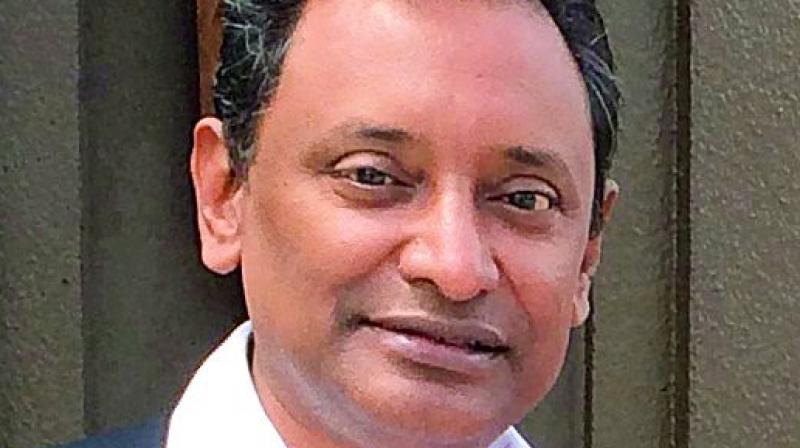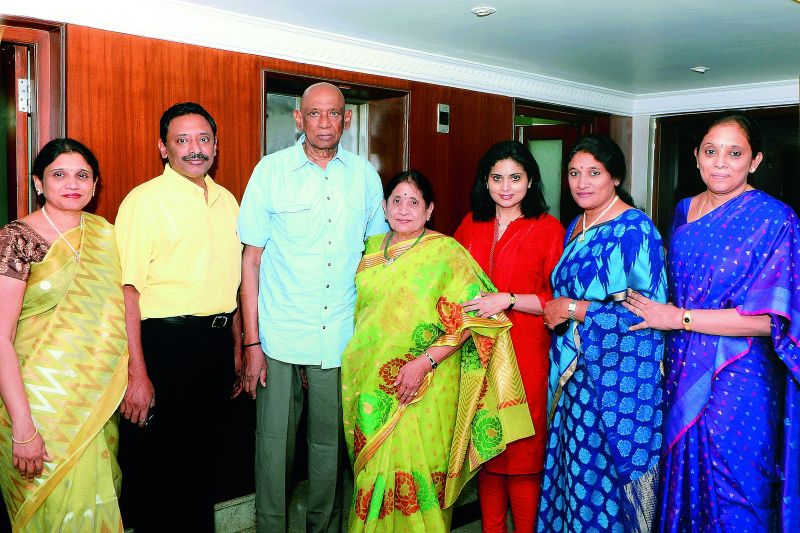Hyderabad connect to Chandrayaan-2!
While the spectacular launch of India’s Moon mission made a billion hearts swell with pride.

It’s probably one of the city’s best kept secrets — but the euphoria inducing launch of India’s Moon mission, Chandrayaan-2 that hit the headlines across the world — was made by a Hyderabad-based company. Some of the crucial parts of the spacecraft were made by MTAR Technologies in Balanagar, which not only manufactured the core parts for the powerful main rocket engine, but also the core pumps of its cryogenic engines required for take-off.
The history of the company and its founders is even more noteworthy — since being founded in 1969, the company has been working closely with the Government of India on crucial projects, including in the defence and nuclear power sectors. And some of the parts they manufacture are so specialised that no one else in the country can make them. Srinivas Reddy, the son of Ravindra Reddy, one of the founding members of the company and a director, says that the launch is a sign of exciting things to come for India.
“We are really excited about what we have achieved and feel equally proud of everyone at the Indian Space Research Organisation (ISRO),” he says, adding, “India is set to become a real space hub in the near future because of the economics involved. The technology used is 20 times cheaper than NASA, which means we should become a popular choice to launch satellites for other countries. We are set to peak in the aerospace area for sure.”
The next stage for India is sending a man to the moon, which ISRO is working towards, he reveals.
Srinivas explains that the one major technological advancement of Chandrayaan-2 is its engine, whose overall fuel efficiency is 15 per cent higher than previous rocket engines, allowing the spacecraft to make a series of manoeuvres more easily. “This means that landing near the South Pole of the Moon can happen even a day earlier than the scheduled date of September 7,” he shares.
 P. Ravindra Reddy on hs 75th Birthday with wife and children. (L to R): Lavanya (daughter) , Srinivas (Son), Ravindra Reddy, Leelavathi (wife), Samantha (daughter in law) Saranya (daughter), Kalpana (daughter)
P. Ravindra Reddy on hs 75th Birthday with wife and children. (L to R): Lavanya (daughter) , Srinivas (Son), Ravindra Reddy, Leelavathi (wife), Samantha (daughter in law) Saranya (daughter), Kalpana (daughter)
Founding years
As a young boy, Srinivas watched his father P. Ravindra Reddy build the company from scratch along with co-founders, P. Jayaprakash Reddy and K. Satyanarayana Reddy.
With about five factories and manufacturing units in Hyderabad, MTAR has been indigenously developing and manufacturing components and equipment for the aerospace, defence, nuclear, oil and energy and ball screw sectors. “We were involved with the launch of Chandrayaan-1 too but have always remained low-key,” he informs.
In-house technologies
Chandrayaan-2 will be India’s first surface landing on the moon — a feat previously achieved by only Russia, the US and China.
While the sanctions made it impossible for India to import space or nuclear technologies from advanced countries, it only made the country stronger, says Srinivas.
“India is among only four countries with advanced space programmes. Since the sanctions, India had to develop all the technology in-house. All credit is due to the scientists at ISRO for the effort they put in,” he says.
Interestingly, as far back as 1989, MTAR supplied the first Vikas rocket engine to ISRO and has since manufactured about 70 such engines.
Nuclear reactors
The company has also been working closely with the government on nuclear technologies for almost 50 years now. While the technology for nuclear reactors was never given to India, with the help of the Nuclear Power Corporation of India (NPCIL), the country established almost 18 nuclear reactors all across the country despite the sanctions.
Says a proud Srinivas, “Till date, they have all run smoothly with no accidents. They each require lots of components, some of which are still manufactured exclusively by us.”

